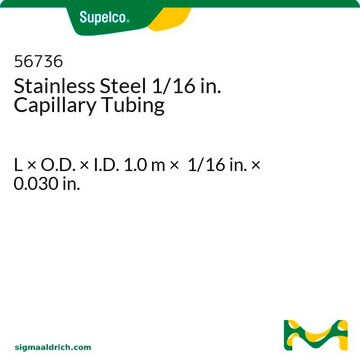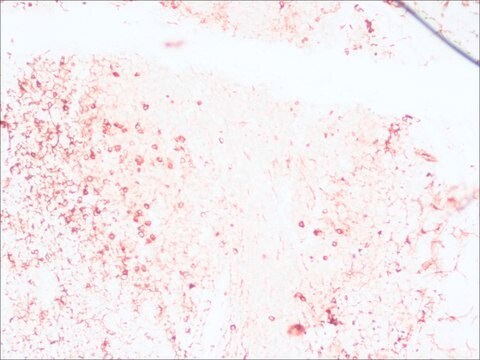MABN2421
Anti-Beta (β)-Amyloid antibody
mouse monoclonal, Mhj7.4
Synonym(s):
Ab42, Amyloid peptide 1-42
About This Item
Recommended Products
Product Name
Anti-Amyloid β 1-42 Antibody, clone mHJ7.4, clone mHJ7.4
biological source
mouse
Quality Level
antibody form
purified antibody
clone
mHJ7.4, monoclonal
mol wt
4.51 kDa (for Amyloid 1-42 peptide; 86.94 kDa calculated for Amyloid Precursor Protein.)
purified by
using protein G
species reactivity
human
isotype
IgG2bκ
accession no.
NP_000475
UniProt accession no.
General description
Processing of APP occurs by two major pathways cleavage of APP by a-secretase is a non-amyloidogenic pathway and does not produce Aβ peptides. Cleavage of APP at the N-terminus of the Aβ region by β-secretase and at the C-terminus by g-secretase represents the amyloidogenic pathway. The β-secretase cleaves APP between residues Met671 and Asp672 and yields sAPPβ and C99. Following the β-secretase cleavage, a second cleavage occurs at the C-terminus of Aβ peptide that releases Aβ from C99. This cleavage occurs in the vicinity of residue 712 of the C-terminus. The g-secretase can cleave the C-terminal region at either Val711 or Ile713 to produce the shorter Aβ peptide (Aβ1-40) or the longer Aβ peptide (Aβ1-42), respectively.
The predominant form of Aβ found in the cerebrospinal fluid is the shorter Aβ1-40 peptide. Despite its lower rate of synthesis, Aβ1-42 is the peptide that is initially deposited within the extracellular plaques of AD patients. In addition, Aβ1-42 is more hydrophobic and aggregates at much lower concentration than the Aβ1-40 form. The abnormal accumulation of Aβ peptides can result in neuronal damage and loss by increasing free radical production and activation of inflammatory pathways by enhancing microglial secretion of inflammatory cytokines. Interaction between Aβ and ApoE3 or E4 is also an important determinant of amyloidosis. ApoE3 is shown to inhibit Aβ aggregation in vitro by decreasing Aβ multimers, whereas ApoE4 is reported to accelerate the rate of amyloid fibril formation.
Specificity
Immunogen
Application
Note: Actual optimal working dilutions must be determined by end user as specimens, and experimental conditions may vary with the end user
Quality
Reconstitution
Storage and Stability
Other Notes
Disclaimer
Storage Class Code
12 - Non Combustible Liquids
WGK
WGK 1
Flash Point(F)
Not applicable
Flash Point(C)
Not applicable
Certificates of Analysis (COA)
Search for Certificates of Analysis (COA) by entering the products Lot/Batch Number. Lot and Batch Numbers can be found on a product’s label following the words ‘Lot’ or ‘Batch’.
Already Own This Product?
Find documentation for the products that you have recently purchased in the Document Library.
Our team of scientists has experience in all areas of research including Life Science, Material Science, Chemical Synthesis, Chromatography, Analytical and many others.
Contact Technical Service








